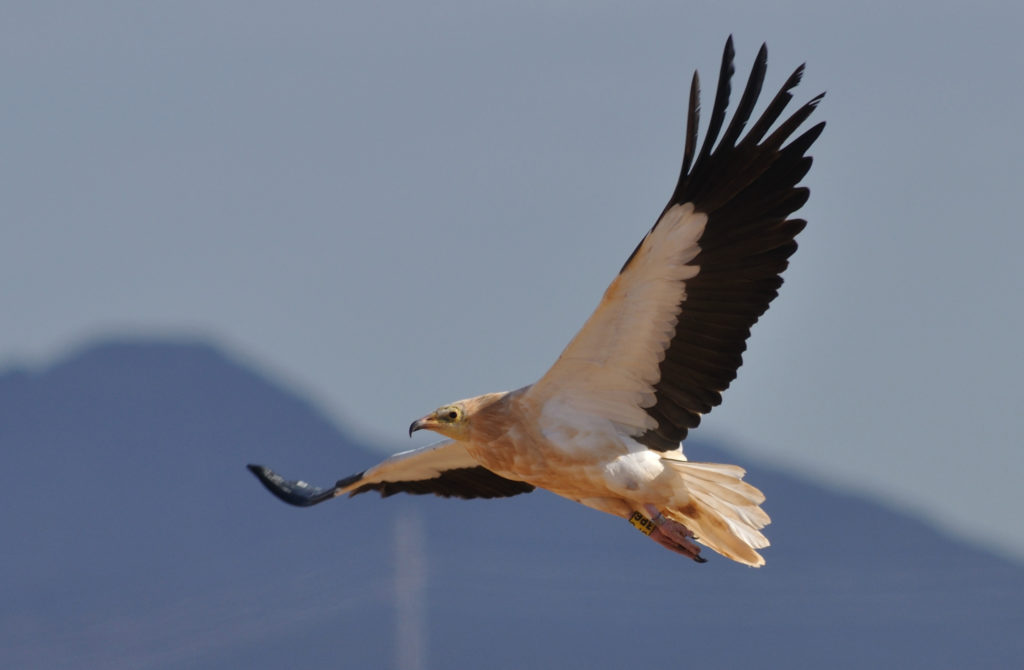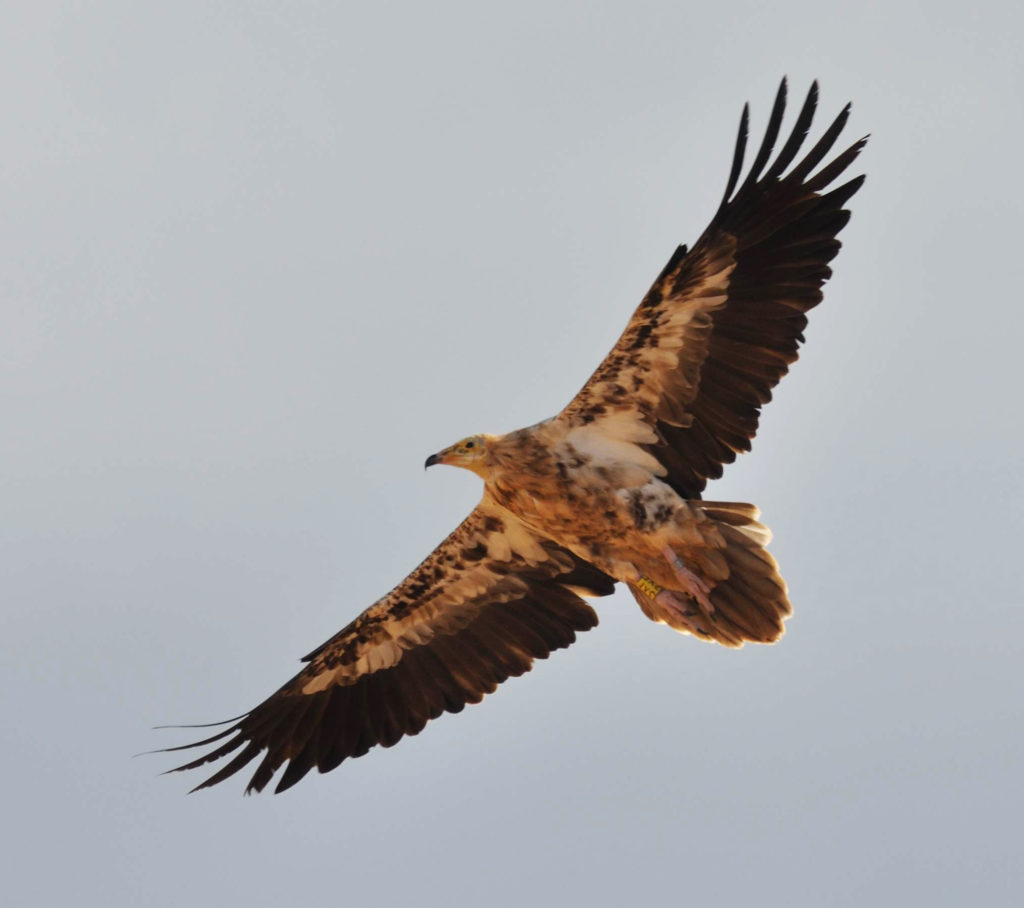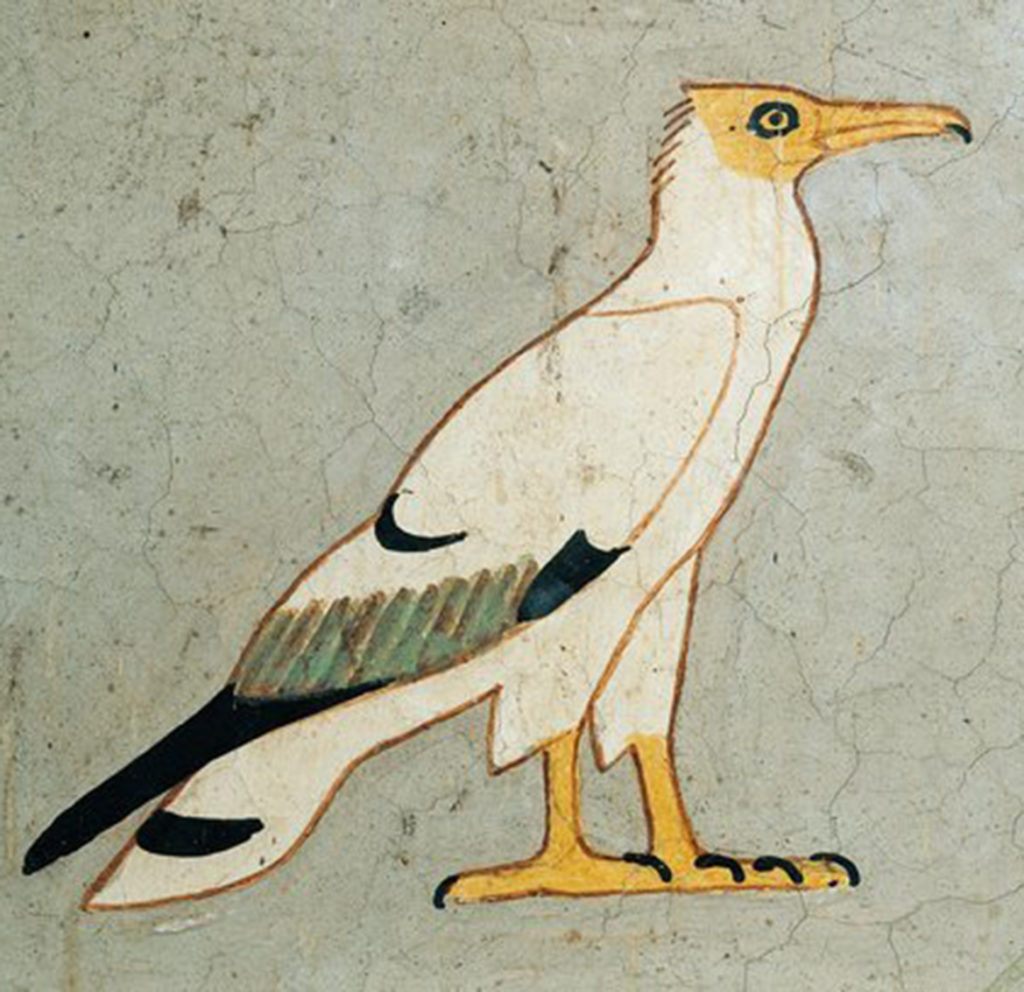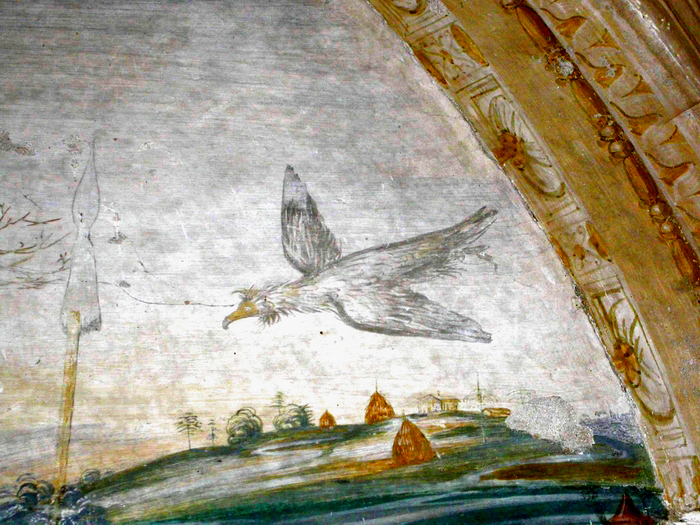The Egyptian vulture
The Egyptian vulture (Neophron percnopterus) is the smallest of the four species of European vulture (the Griffon vulture, Bearded vulture and Black vulture are the other three). Without a doubt it is also the most remarkable and “nicest”-looking one – definitely not like most people’s stereotype of a vulture.

As an adult, the yellow face, the “uncombed” tufts of feathers adorning the head and its pink feet give it a bizarre and surprising appearance. In flight, however, the black and white plumage, the wide wingspan (155–170 cm) and the short wedge-shaped tail undeniably give it nobility and elegance.
The appearance of the young is even more striking, characterised by brown spotted plumage of cinnamon colour and cerulean-grey on the face and legs.
In the Canary Islands there is an endemic subspecies (Neophron percnopterus majorensis) that is exclusive to the archipelago and which is the only species of vulture present there. The “guirre canario” (Canarian guirre), as it is locally called, is distinguished from the so-called “nominal” subspecies – that is, from the Egyptian vulture that nests in the European continent – by genetic differences and by its larger dimensions (its weighs about 0.5 kg more, has longer tail feathers, and wings which are 20 cm longer).
The Egyptian vulture favours open areas which are grazed and cultivated, near rocky walls, which are indispensable for nesting (it very rarely nests in trees).
It generally lays two eggs, less frequently one and three in very rare cases.
It is mainly necrophagous, meaning its diet consists primarily of dead animals, although it also includes excrement and placenta and this is the reason why this vulture often follows flocks and herds awaiting the remains from the birth of other animals. The Italian common name of the species, “capovaccaio (cows chief)”, is of Tuscan origin and derives from its habit of wandering on land among the livestock.
The Egyptian vulture can be found in Southern Europe, Africa, the Middle East, Central Asia and India. In Nepal and India the subspecies N. percnopterus ginginianus can be found, but it’s much smaller in size.
In Europe, the Egyptian vulture is a predominantly migratory species which spends winters in Sub-Saharan Africa and returns to Europe between March and October to breed. Juveniles migrate to Africa at the end of summer and usually spend about three to four years there before returning to Europe.
The “guirre canario” (Canarian guirre), on the other hand, is sedentary (i.e. it does not migrate). Also sedentary are the Egyptian vulture populations on the island of Menorca (Balearic Islands) and the Cape Verde Islands.

The Egyptian vulture and human civilisation
The Egyptian vulture appeared in the hieroglyphs of ancient Egypt and was the symbol for the letter “A”. Sacred and protected by the Pharaohs, it was known as the “Pharaoh’s chicken” – whoever dared to kill an Egyptian vulture would be sentenced to death.
The Egyptians believed that vultures were all females and that they were born without the intervention of males – a phenomenon which today we call parthenogenesis; This is why vultures symbolised purity and motherhood, but also the eternal cycle of death and rebirth for their ability to transform the “death” they feed on – i.e. carrion and waste – into life distinguished by an incomparable elegance in flight.

Vultures were sacred to the Goddess Isis and were even raised to the rank of deity in the case of Nekhbet, protector of Upper Egypt and the Pharaoh, who was depicted wearing a vulture-shaped headdress or with her head depicting a vulture. Her priestesses wore robes of white Egyptian vulture feathers.
The scientific name of the Egyptian vulture, Neophron percnopterus, is of Greek origin. The term “percnopterus” means “black wings” while the term “neophron” derives from Greek mythology: Zeus decided to turn the Neophron and Aegypius into vultures when a heavy conflict broke out between them. The former gave his name to the Egyptian vulture, the latter to the Black vulture (Aegypius monachus).
Legends about the Egyptian vulture are known in various European countries as well as in India.
Almost everywhere the appearance of this species, which is mostly migratory, marks the arrival of spring and many local names bear witness to it, for example the name “Pasqualino” in the South of Italy.
In Asciano (Siena), in the Great Cloister of the Abbey of Monte Oliveto Maggiore, the Egyptian vulture is depicted in one of the lunettes that makes up the cycle of frescoes on the Stories of Saint Benedict, dating back to the late-15th to early-16th century.
Let us hope that – and, above all, take great care to ensure that – the “Pharaoh’s chicken” is not solely remembered by the next generations as the protagonist of ancient legends or an effigy carved and painted on artefacts of buried civilisations.


